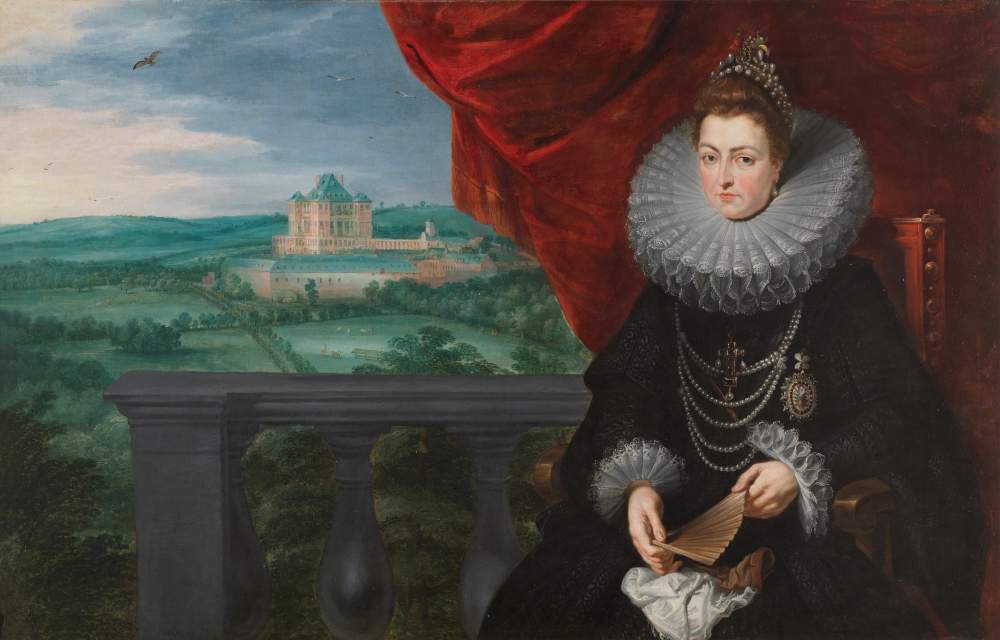The Prado dedicates an exhibition to the women who have contributed to the museum's collection
In collaboration with the Women’s Institute of the Ministry of Culture, until April 9, 2023, the Prado Museum presents an exhibition on its permanent collection, designed with the academic supervision of Noelia García Pérez, associate professor of art history at the University of Murcia, dedicated to the role of women as promoters of the arts. Indeed, women have played an important role for the Spanish capital’s museum, both as collectors and promoters and through their contributions to its foundation and existence.
Women who also distinguished themselves by promoting the artists who worked in their service, such as Isabel Clara Eugenia. She is credited with dozens of works in the museum collections. Moreover, the Prado’s close connection with Rubens is due in large part to the promotion and dissemination of his career by the archduchess, who was governor of the southern Netherlands. That is why the Prado houses the largest collection of Rubens works in the world.
The Female Perspective, this is the title of the exhibition, aims to present a new point of view, a different but rigorous perspective on the collections, focusing on themes and subjects other than the usual ones, in this case by putting women at the center of attention.
Through thirty-two works, the exhibition aims to focus on the women who commissioned, collected, or inspired some of the most important works of art in the museum’s collection; on the women behind the Prado Museum and who contributed strongly to the formation of its collections in a precise chronological span, from 1451 to 1633, that is, the lives of Isabella the Catholic to Isabella Clara Eugenia.
The exhibition also provided an opportunity to display several works previously in storage, including portraits of Isabella Clara Eugenia and Albert of Austria by Rubens and Jan Brueghel the Elder; John Frederick of Saxony by Titian; Elizabeth of Valois by Pantoja de la Cruz; and Anne of Austria by Bartolomé González. In addition, other works have been relocated to the galleries, including the sculptural busts of Eleanor of Austria and Mary of Hungary by Dubroeucq and the Leonis, respectively, in order to provide a more complete narrative of the permanent collection. Finally, the captions of some works in the exhibition have been changed to offer a narrative that better reflects 21st century interests.
For this project, the Prado Museum produced three documentaries corresponding to the three exhibition sections. Experts from the Prado and other museums and academic institutions participated in these audiovisual productions. Available on the Museum’s Youtube channel, these videos constitute a useful resource in terms of knowledge and academic dissemination.
With the aim of acquainting the public with these women and their activities in relation to art promotion and their connection to the Prado’s collections, the exhibition kicks off with a section entitled Women Patrons of Art in the Prado Museum (1451-1633), which focuses on the most important portraits of these queens, regents, and governors displayed in the permanent collection, works that reveal the iconographic solutions and visual strategies used to construct and promote the public image of the models. Portraits allow us to explore the uses and functions assigned to them by focusing our gaze on themes of religious devotion and family ties.
The second and third sections are devoted to the two most important patrons of this period associated with the Museum’s collections, namely Mary of Hungary and Isabella Clara Eugenia, both of whom held prominent political positions. After the death of her husband Louis II, Maria was regent of Hungary on behalf of her brother Ferdinand I until June 1527 then governor of the Southern Netherlands from 1531 to 1555. Isabel Clara Eugenia was sovereign princess of the latter territories from 1599 to 1621, ruling together with her husband Archduke Albert, after which she was the sole ruler as a widow until her death in 1633. Both Maria and Isabel took full advantage of their prominent political positions, and the autonomy of their status as widows enabled them to consolidate their authority and maintain their networks of influence, while also creating two of the most important art collections of the European Renaissance. In this regard, it should be noted that some of the artworks and architectural designs they commissioned were particularly useful in defining their roles and positions at court and simultaneously projecting them onto the international political stage.
The selection of devotional works, mythological scenes, and portraits of overtly political intent included in these two sections provides a better understanding of two of the key figures in early modern European politics.
Image: Pieter Paul Rubens and Jan Brueghel the Elder, The Infanta Isabel Clara Eugenia before the Castle of Mariemont (c. 1615; oil on canvas; Madrid, Museo del Prado)
 |
| The Prado dedicates an exhibition to the women who have contributed to the museum's collection |
Warning: the translation into English of the original Italian article was created using automatic tools. We undertake to review all articles, but we do not guarantee the total absence of inaccuracies in the translation due to the program. You can find the original by clicking on the ITA button. If you find any mistake,please contact us.




























